Transceiver Architecture Fusion of Wireless
Communication and Radar Sensing Systems
Prof. Ke Wu, FIEEE, FCAE, FRSC
Canada Research Chair in RF and Millimeter-Wave Engineering,
Poly-Grames
Research
Center,
Department of Electrical Engineering,
Center for Radiofrequency Electronics Research (CREER) of Quebec
Ecole Polytechnique (University
of Montreal),
Canada
Abstract
Wireless communication and radar sensing
are two of the most prominent applications of radio technology. In the past,
these two systems operate differently and independently. However, if
implemented, the system fusion of wireless communication and radar sensing would
definitely bring up many benefits such as architecture unification,
simplification, and miniaturization, functional reconfiguration and fusion, and
especially efficiency enhancement and cost reduction. This presentation reviews
the emerging advances in the waveform design and system development for
multifunctional wireless systems that integrate both communication (radio) and
sensing (radar) functions. State-of-the-art communication-radar (or radio-radar)
modulation schemes are presented and their features are discussed with reference
to the transceiver architecture fusion. Theoretical and experimental research
results on integrated communication and radar T/R platform are highlighted to
showcase the current system development. Future research topics in this
direction are also pointed out.
Biodata
Dr. Ke Wu is Professor of electrical
engineering, and Canada Research Chair in RF and millimeter-wave engineering at
the Ecole Polytechnique (University of Montreal). He has been the Director of
the Poly-Grames Research Center
and the Founding Director of the Center for Radiofrequency Electronics Research
of Quebec. He has authored/co-authored over 900 referred papers, and a number of
books/book chapters and more than 30 patents. Dr. Wu has held key positions in
and has served on various panels and international committees including the
chair of technical program committees, international steering committees and
international conferences/symposia. In particular, he was the general chair of
the 2012 IEEE MTT-S International Microwave Symposium. He has served on the
editorial/review boards of many technical journals, transactions and letters as
well as scientific encyclopedia including editors and guest editors. He has been
providing consulting services to corporations, governments and universities
around the world. Dr. Wu is an elected IEEE MTT-S AdCom member and served as the
chair of the IEEE MTT-S Transnational Committee and Member and Geographic
Activities (MGA) Committee. He was the recipient of many awards and prizes
including the first IEEE MTT-S Outstanding Young Engineer Award, the 2004
Fessenden Medal of the IEEE Canada, the 2009 Thomas W. Eadie Medal from the
Royal Society of Canada (The Academies of Arts, Humanities and Sciences of
Canada), and the Queen Elizabeth II Diamond Jubilee Medal . He is a Fellow of
the IEEE, a Fellow of the Canadian Academy of Engineering (CAE) and a Fellow of
the Royal Society of Canada. He was an IEEE MTT-S Distinguished Microwave
Lecturer from Jan. 2009 to Dec. 2011.
Cooperative Wireless Communications for
Road Users
Prof. Fawzi Nashashibi
Program Manager of IMARA Team at INRIA (Paris-Rocquencourt),
France
Dr. Oyunchimeg SHAGDAR
INRIA (Paris-Rocquencourt),
France
Abstract
ITS is expected to largely contribute in
building a safer and more comfort road environment for humans, who spend
considerable amount of their time on the road as pedestrians, as drivers, or as
passengers.
In order to build a safe and comfortable
road environment for such diverse applications, it is required to build a
cooperative ITS that is to simultaneously and efficiently use of diverse
communications devices, diverse medias, and diverse communications protocols.
In this talk to highlight the recent
research and standardization activities on cooperative ITS. Moreover, the road
safety and efficiency can further be improved by cooperative
communication/control and communication/perception technologies.
We introduce our ongoing research activities on
cooperative communications and perception for pedestrian safety and cooperative
communications and control for platooning control.
Biodata
 Fawzi Nashashibi, 46 years, is a senior researcher and the Program Manager of
IMARA Team at INRIA (Paris-Rocquencourt) since November 2010. He has been senior
researcher and Program Manager in the robotics centre of the Ecole des Mines de
Paris (Mines ParisTech) since 1994 and was an R&D engineer and a project manager
at ARMINES since May 2000. He was previously a research engineer at PROMIP
(working on mobile robotics perception dedicated to space exploration) and a
technical manager at Light Co. where he led the developments of Virtal
Reality/Augmented Reality applications. Fawzi Nashashibi has a Masters Degree in
Automation, Industrial Engineering and Signal Processing (LAAS/CNRS), a PhD in
Robotics from Toulouse University prepared in (LAAS/CNRS) laboratory, and a HDR
Diploma (Accreditation to research supervision) from University of Jussieu
(Paris 6). His main research topics are in environment perception and
multi-sensor fusion, vehicle positioning and environment 3D modeling with main
applications in Intelligent Transport Systems and Robotics. He played key roles
in more than 50 European and national French projects such as Carsense, ARCOS,
ABV, LOVe, HAVE-it, SPEEDCAM, PICAV, CityMobil... some of which he is
coordinating. He is also involved in many collaborations with French and
international academics and industrial partners. He is author of numerous
publications and patents in the field of ITS and ADAS systems. His current
interest focuses on advanced urban mobility through the design and development
of highly Automated Transportation Systems. This includes Highly Automated
Unmanned Guided Vehicles (such as Cybercars) as well automated personal
vehicles. Since 1994 he is also a lecturer in several universities (Mines
ParisTech, Paris 8 Saint-Denis, Leonard de Vinci Univ. - ESILV professor,
Telecom Sud Paris, INT Evry, Ecole Centrale d’Electronique, in the fields of
image and signal processing, 3D perception, 3D info-graphics, mobile robotics
and C++/JAVA programming. IEEE member, he is also member of the ITS Society and
the Robotics & Automation Society. He is an Associate Editor of several IEEE
international conferences such as ICRA, IROS, IV.
Fawzi Nashashibi, 46 years, is a senior researcher and the Program Manager of
IMARA Team at INRIA (Paris-Rocquencourt) since November 2010. He has been senior
researcher and Program Manager in the robotics centre of the Ecole des Mines de
Paris (Mines ParisTech) since 1994 and was an R&D engineer and a project manager
at ARMINES since May 2000. He was previously a research engineer at PROMIP
(working on mobile robotics perception dedicated to space exploration) and a
technical manager at Light Co. where he led the developments of Virtal
Reality/Augmented Reality applications. Fawzi Nashashibi has a Masters Degree in
Automation, Industrial Engineering and Signal Processing (LAAS/CNRS), a PhD in
Robotics from Toulouse University prepared in (LAAS/CNRS) laboratory, and a HDR
Diploma (Accreditation to research supervision) from University of Jussieu
(Paris 6). His main research topics are in environment perception and
multi-sensor fusion, vehicle positioning and environment 3D modeling with main
applications in Intelligent Transport Systems and Robotics. He played key roles
in more than 50 European and national French projects such as Carsense, ARCOS,
ABV, LOVe, HAVE-it, SPEEDCAM, PICAV, CityMobil... some of which he is
coordinating. He is also involved in many collaborations with French and
international academics and industrial partners. He is author of numerous
publications and patents in the field of ITS and ADAS systems. His current
interest focuses on advanced urban mobility through the design and development
of highly Automated Transportation Systems. This includes Highly Automated
Unmanned Guided Vehicles (such as Cybercars) as well automated personal
vehicles. Since 1994 he is also a lecturer in several universities (Mines
ParisTech, Paris 8 Saint-Denis, Leonard de Vinci Univ. - ESILV professor,
Telecom Sud Paris, INT Evry, Ecole Centrale d’Electronique, in the fields of
image and signal processing, 3D perception, 3D info-graphics, mobile robotics
and C++/JAVA programming. IEEE member, he is also member of the ITS Society and
the Robotics & Automation Society. He is an Associate Editor of several IEEE
international conferences such as ICRA, IROS, IV.
Biodata
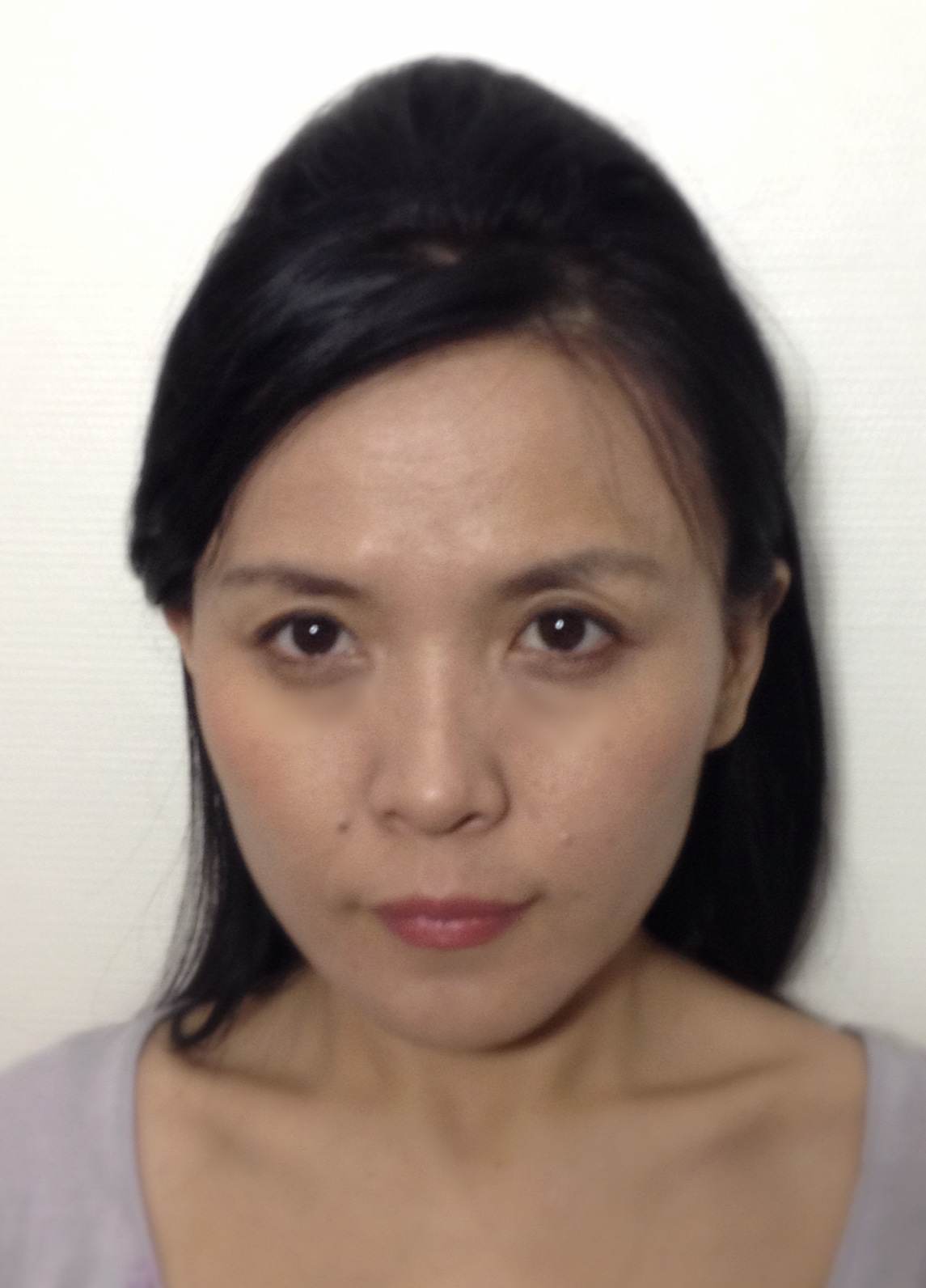 Before joining INRIA, Dr. Oyunchimeg Shagdar has been working Advanced Telecommunications Research Institute International (ATR), Japan, from 2004 to 2012. Her research interest includes wireless communications, especially medium access control, routing/forwarding/access point selection, and transmission coding for vehicular, mesh, sensor applications. She is a co-supervisor of Ph.D. student Ines Ben-Jemaa and Pierre Merdrignac. She also supervises undergraduate and graduate internship students from Japan, Spain, and etc.
Before joining INRIA, Dr. Oyunchimeg Shagdar has been working Advanced Telecommunications Research Institute International (ATR), Japan, from 2004 to 2012. Her research interest includes wireless communications, especially medium access control, routing/forwarding/access point selection, and transmission coding for vehicular, mesh, sensor applications. She is a co-supervisor of Ph.D. student Ines Ben-Jemaa and Pierre Merdrignac. She also supervises undergraduate and graduate internship students from Japan, Spain, and etc.
Autonomous Navigation in a Human
Environment
Prof. Anne Spalanzani
e-Motion team, LIG Laboratory, Pierre-Mendès-France
University, France
Abstract
Autonomous robot navigation in dynamic and human populated
environments is still a challenging problem where the main addressed aspect in
the state of the art has been the safety of the robot.
The assumption that environment is populated by human beings
introduces a new important aspect: to include social awareness in the navigation
solutions. Most of the previous approaches supposed that people are moving
independently and considered people as dynamic obstacles or non-static objects.
Recently, the social awareness issue has been addressed by considering humans
not only as dynamic obstacles that respond to physical properties but also as
social entities with intentions and feelings that follow social conventions
according to psychological properties.
The main difficulties related to the presented problem are:
(1) the uncertainty inherent to the future state of physical world. Models for
the prediction of the most likely situation of the environment and the observed
moving entities must be included. The representation of the environment must
permit a fast updating with the new observations and be available when the
navigation strategy requires information. (2) The uncertainty is linked to the
perception of the physical world. Each sensor has a particular model with
specific advantages and drawbacks therefore a robust fusion technique of data
coming from multiple sensors must be implemented considering uncertainty. Robust
real-time techniques are needed in order to detect and track humans in the
environment providing useful information to reach high level reasoning on scene
situations. Many robust current techniques employed to register human motion
rely on invasive sensors which are not suitable for common life settings. (3)
Mathematical models capable to reproduce social behavior in practice must be
developed. While a perfect model of human behavior could not be available, some
techniques have already been used to replicate expected social behavior in
robotic fields. Navigation techniques must rely on that kind of models both to
understand the scene and to filter non socially acceptable behaviors. Social
conventions are a creation of human societies; they are difficult to model
because they include always a subjective component invisible to sensors, they
are situation dependent and very adaptive. But their function as regulator of
social behaviors makes them essential to reach social awareness. (4) The
navigation strategy to use must produce collision free solutions based on the
dynamic environment model, social conventions model and robot dynamic
properties. The motion planning algorithm chosen must reach equilibrium between
the reactive properties desired in a dynamic environment with the stable
solutions of a global planner.
This talk will present a socially-aware navigation method
including both an assessment of a risk of collision using predictive models of
moving obstacles, and an assessment of accordance with social conventions. Human
management of space (personal space, o-space, activity space...) inspired from
sociology and social robotics literature is integrated, but also models of
behavior that enable the robot to make medium-term prediction of the human
positions.
Biodata
Since 2003,
Anne Spalanzani is
associate professor at Pierre-Mendès-France University and member of the
e-Motion project-team
of LIG Laboratory (Laboratory of Informatics of
Grenoble).
She received her PhD in Computer Science entitled
"Evolutionary Algorithms for the study of the Robustness of Speech Recognition
Systems" from the Joseph Fourier University in 1999.
She spent 1 year at the CNR of Rome working on “Learning and
Evolution”. Her research focuses now on risk based navigation and human aware
navigation. She coordinates an ict-asia project on service robotics and she
coordinates the work of her team in the INRIA Large Scale Initiative Action
PAL on assistance to mobility for elderly
people. She is co-PI of the iceira
Lab in Taiwan.
Radio-Frequency Energy Harvesting:
Rectenna and Rectifier
Prof. Jean-Marc Duchamp
UJF-IMEP LAHC, Grenoble INP, France
Abstract
Nowadays wireless power transfer is a promising technique for
the long-term power supply of embedded wireless systems; e.g. heath applications
(glucose measurement, body temperature, heart rate, etc…) or industrial
applications (gas detection sensor, temperature measurement, …). These systems
need low power electronic and alternatives for battery feeding. Several research
teams are working on the possibility to create autonomous systems by ambient
energy harvesting (electromagnetic, solar, vibration, thermal, etc ...).
The photovoltaic energy can provide a significant recovered
power, 5 µW (panel size: 150 µm x 150 µm). A second solution is the
vibration energy available, this source can provide up to 335 µW (piezoelectric,
2.25 m.s-2). Another possibility is the use of thermal energy with a
possible recovery of about 250 µW (ambient indoor temperature). An
interesting solution is based on the recovery of a radio frequency (RF) signal
for supplying a DC power. It is possible to consider collecting up to 100
µW/cm².
This paper focuses on the state of art on RF harvesting. In a
first part we describe the various solutions published of rectenna and their
perfomances.
In a second part we present a new approach to a
high-efficiency rectifier circuit design at 2.45 GHz, based on the principle of
a "remix” successive of the harmonics generated by the diode. To validate this
method, we developed a rectifier circuit capable of recover signals at 2.45 GHz
with a high RF-DC efficiency conversion. The prototype has a RF-DC conversion
efficiency of 70.4% for an RF input power of 0 dBm at 2.45 GHz.
Biodata
Jean-Marc Duchamp was born in Lyon, France, in 1965. He
received his Master Sc degree from University of Orsay, (France) in 1988 and
Engineer degree in 1990 from SUPELEC. He has been as a research engineer in a
company specialized in electron beam called TECHMETA (France) from 1991 to 1996.
Then He worked as professeur agrege of university of Savoie (UdS) from 1996 to
2005. He received the PhD degree in 2004 from LAHC laboratory of UdS (France).
Today, he is assistant professor in university of J. Fourier (Grenoble – France)
since 2005. He teaches electronic and telecommunication in this university. His
current research interests include passive microwave and mm-wave circuits
analysis and characterization like, matching impedance networks, filters, power
divider, MEMS, slow-wave periodical structures, tuneable and miniaturized RF sub
systems.
Control of Redundancy in Complex
Systems: from Theoretical Concepts to Applications
P. Martinet, A. Abou Moughlbay, P. Long
UJF-IMEP LAHC, Grenoble INP, France
Abstract
Complex systems like humanoid robots, multi arms systems, even
platoon of vehicles, are difficult to handle because on their internal
complexity and on the classical way of modeling used in robotics. Since the end
of the eighties, a novel concept was introduced in order to formalize the task
to be done not as a function of the internal joints of the robot but as a
function of a set of interaction between the robot and the environment: it is
named sensor based control.
We will present the road which has been followed in the last
decades and present the current work done in this area. We will illustrates
through three applications the main concepts. Two applications will concern
humanoid robots (HRP2 and NAO), and the last one will be focused on a multi arms
system (3 arms) used in order to perform dual arm beef muscle separation.
Biodata
Philippe Martinet graduated from the CUST, Clermont-Ferrand,
France, in 1985 and received the Ph.D. degree in electronics science from the
Blaise Pascal University, Clermont-Ferrand, France, in 1987.
From 1990 till 2000, he was assistant Professor with CUST in
the Electrical Engineering Department, Clermont-Ferrand. From 2000 until 2011,
he has been a Professor with Institut Français de Mécanique Avancée (IFMA),
Clermont-Ferrand. He was performing research at the Robotics and Vision Group of
LASMEA-CNRS, Clermont-Ferrand. In 2006, he spent one year as a visiting
professor in ISRC at the Sungkyunkwan university in Suwon, South Korea.
He was the leader of the group GRAVIR (over 74 person) from
2001 til 2006. From 1997 until 2011, he led the Robotic and Autonomous Complex
System team (over 20 persons). From 2008 until 2011, he co-lead a Joint Unit of
Technology called "Robotization in meet Industry", and the Korea France Joint
Research Center on Cognitive Personal Transport Service Robot in Suwon (South
Korea).
Since September 2011, he moves to Ecole Centrale de Nantes and
make his research at IRCCYN in the robotics team. He stays associated researcher
to Pascal Institute in Clermont-Ferrand.
He is leading the mobile robotics research axis.
His research interests include Visual servoing of Robots
(Position, Image and Hybrid Based, Omnidirectional), multi sensor based control,
Autonomous Guided Vehicles (platoon), Modeling Identification and Control of
complex machines (parallel robots, humanoid robots, and multi arms systems), and
Redundancy control and autonomy.
From 1990, he has driven three habilitations, 19 past Ph.D
students, plus 6 in progress, 16 Master students and 5 Post-doc. For the same
period, he is author and co-authors of more than two hundred sixty references 35
IJ, 2 NJ, 160 IC, 22 NC, 36 IW, 1 NW, and 6 book Chapters.
Improvement Performance of Multi-hop
Ad-hoc Networks based on Cross-layer Design
Quang-Khanh Nguyen, Van-Duc Nguyen
School of Electronics and
Telecommunications
Abstract
A new MAC and Network cross layer protocol for OFDMA-based
Multi-hop Ad-hoc Networks is proposed. In wireless network, when a route is
established, the radio resource allocation problems at MAC layer may decrease
the end to end performance proportionally with the length of each route. The
contention at MAC layer may causes routing protocol to respond by finding new
routes and routing table updates. The cross layer protocol allows layers to
exchange state information in order to solve the problem and obtain higher
performance. The proposed MAC and Network optimized cross layer protocol based
the dynamic Sub-channel Assignment Algorithm in to ensure the performance of
ad-hoc and multi-hop networks is significantly improved.
Biodata
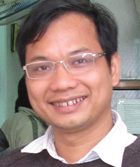 Van
Duc Nguyen was born in Vietnam, in 1973. He received the Bachelor and Master of
Engineering degrees in Electronics and Communications from the Hanoi University
of Technology, Vietnam, in 1995 and 1997, respectively, and the Dr.-Eng. degree
in Communications Engineering from the University of Hannover, Germany, in 2003.
From 1995 to 1998, he worked for the Technical University of Hanoi as an
Assistant Researcher. In 1996, he participated in the student exchange program
between the Technical University of Hanoi and theMunich University of Applied
Sciences for one term. From 1998 to 2003, he was with the Institute of
Communications Engineering, University of Hannover, first as a DAAD scholarship
holder and then as a member of the scientific staff. From 2003 to 2004, he was
employed with Agder University College in Grimstad, Norway, as a Postdoctoral
Researcher. He was with International University of Bremen as a Postdoctoral
Fellow. In 2007, he spent 2 months at the Sungkyungkwan University, Korea, as a
Research Professor. In 2008 and 2009, he was visisting researcher at the
Klagenfurt University, Austria, and the Agder University, Norway, respectively.
His current research interests include Mobile Radio Communications, especially
MIMO-OFDM systems, and radio resource management, channel coding for cellular
and adhoc networks.
Van
Duc Nguyen was born in Vietnam, in 1973. He received the Bachelor and Master of
Engineering degrees in Electronics and Communications from the Hanoi University
of Technology, Vietnam, in 1995 and 1997, respectively, and the Dr.-Eng. degree
in Communications Engineering from the University of Hannover, Germany, in 2003.
From 1995 to 1998, he worked for the Technical University of Hanoi as an
Assistant Researcher. In 1996, he participated in the student exchange program
between the Technical University of Hanoi and theMunich University of Applied
Sciences for one term. From 1998 to 2003, he was with the Institute of
Communications Engineering, University of Hannover, first as a DAAD scholarship
holder and then as a member of the scientific staff. From 2003 to 2004, he was
employed with Agder University College in Grimstad, Norway, as a Postdoctoral
Researcher. He was with International University of Bremen as a Postdoctoral
Fellow. In 2007, he spent 2 months at the Sungkyungkwan University, Korea, as a
Research Professor. In 2008 and 2009, he was visisting researcher at the
Klagenfurt University, Austria, and the Agder University, Norway, respectively.
His current research interests include Mobile Radio Communications, especially
MIMO-OFDM systems, and radio resource management, channel coding for cellular
and adhoc networks.
 Khanh
Nguyen Quang was born in Hai Phong, Viet Nam, on September 12th, 1986. He
received the B.S. degree in Networking and Telecommunication from Hanoi
University of Science and Technology, Vietnam and theM.S. degree in Networking
and Telecommunication from l’Universite d’Avignon et des Pays de Vaucluse,
France in 2009 and 2010 respectively.From January 2010 to July 2010, he has
worked at LIA in d’Avignon et des Pays de Vaucluse, France. He has been PhD
student from Hanoi University of Science and Technology since 2011. His major
interests are mobile agents, network management, multimedia applications, mobile
networks, speed communications, mobility, security and QoS guarantees and
networking.
Khanh
Nguyen Quang was born in Hai Phong, Viet Nam, on September 12th, 1986. He
received the B.S. degree in Networking and Telecommunication from Hanoi
University of Science and Technology, Vietnam and theM.S. degree in Networking
and Telecommunication from l’Universite d’Avignon et des Pays de Vaucluse,
France in 2009 and 2010 respectively.From January 2010 to July 2010, he has
worked at LIA in d’Avignon et des Pays de Vaucluse, France. He has been PhD
student from Hanoi University of Science and Technology since 2011. His major
interests are mobile agents, network management, multimedia applications, mobile
networks, speed communications, mobility, security and QoS guarantees and
networking.
Energy management in smart building
Minh-Hoang Le
Department PSI - MICA
Abstract
Homes and offices are key elements in the sustainable urban development because they consume a large part of the electricity production in European countries. Because of the increasing part of renewable energy in electricity production, which is difficult to control, consumers will have to become more involved in the grid management by reducing but also by adjusting their consumption in order to reach equilibrium between production and consumption on the grid, on one hand, and to limit the use of production means with high emission of CO2 on the other hand. The objective is to optimize the energy consumption (electrical and thermal loads) and production (local sources and available generators) according to various criteria such as: the cost to the user, reducing the negative impact on the environment, smoothing peak consumption energy while maintaining the comfort of the user. The available flexibilities of the services provided by domestic appliances are used to compute optimal energy plans. These flexibilities are associated to time windows or heating storage abilities. A constraints formulation of the energy allocation problem is proposed. A derived mixed linear program is used to solve this problem. The energy consumption in houses is very dependent to uncertain data such as weather forecasts and inhabitants' activities. For its operation, the system will rely on weather forecasts to anticipate thermal and photovoltaic resources. It also gradually learns the user behavior to adapt to their needs. Various examples of apartments are used to illustrate the validity of the proposed methods.
Biodata
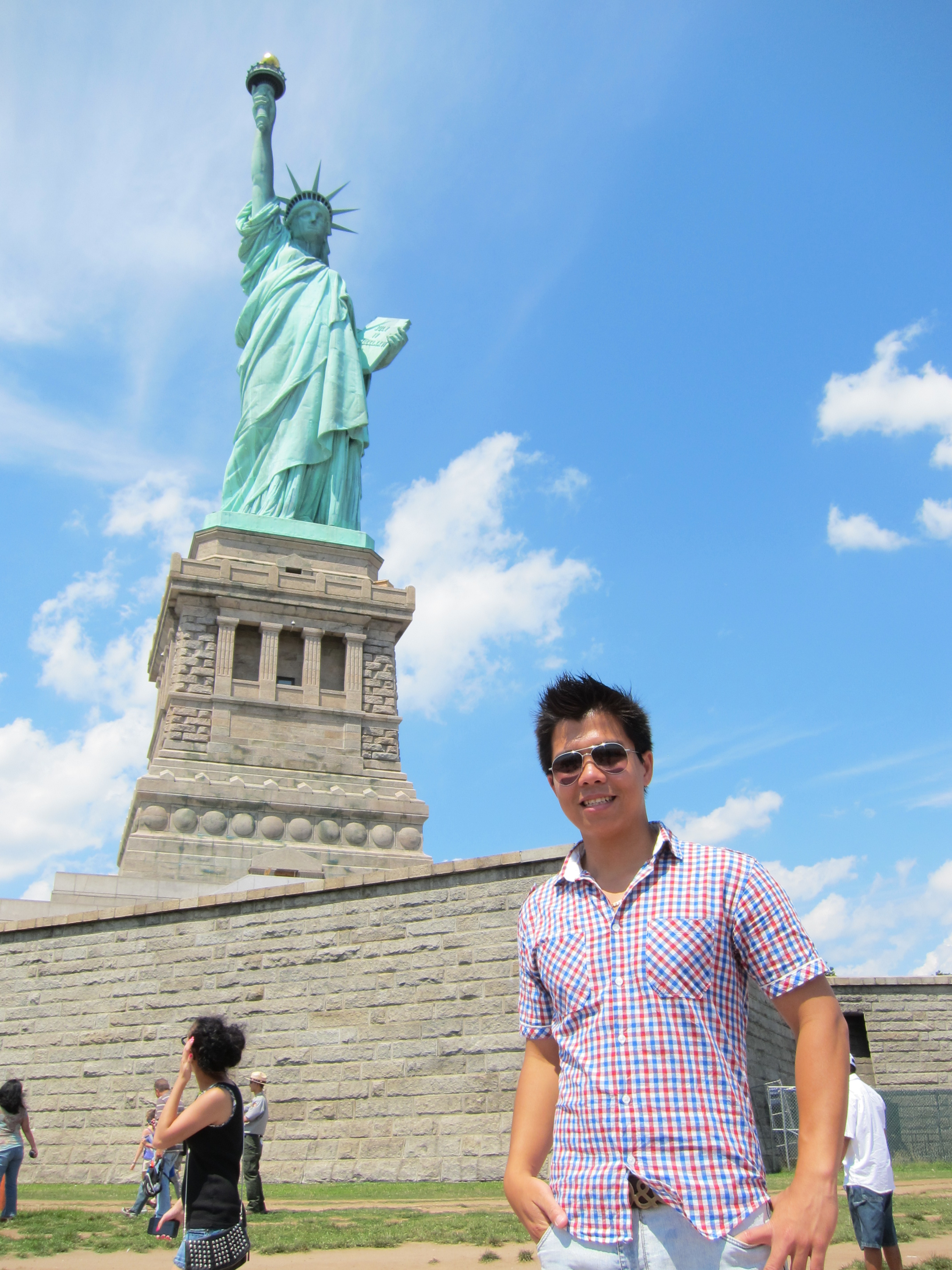 Le Minh Hoang was born in Hanoi, Vietnam. He received the Electrical Engineer degree, specialty of Instrumentation and Industrial Information from the Hanoi University of Science and Technology, Hanoi, Vietnam, in 2007, and the Master and Ph.D. degrees in Automatic and Production from University of Grenoble, Grenoble, France, in 2008 and 2011, respectively. Since 2007, he has been with International Research Institute MICA (Multimedia, Information, Communication and Applications), Hanoi University of Science and Technology, working in the areas of instrumentation, and automated control system. He is currently a Researcher at the Department of Pervasive Spaces & Interaction. His research interests include optimization, energy management system in building and wireless sensors network in building.
Le Minh Hoang was born in Hanoi, Vietnam. He received the Electrical Engineer degree, specialty of Instrumentation and Industrial Information from the Hanoi University of Science and Technology, Hanoi, Vietnam, in 2007, and the Master and Ph.D. degrees in Automatic and Production from University of Grenoble, Grenoble, France, in 2008 and 2011, respectively. Since 2007, he has been with International Research Institute MICA (Multimedia, Information, Communication and Applications), Hanoi University of Science and Technology, working in the areas of instrumentation, and automated control system. He is currently a Researcher at the Department of Pervasive Spaces & Interaction. His research interests include optimization, energy management system in building and wireless sensors network in building.
Vehicle Identification and Classification system using electromagnetic waves
Minh-Thuy Le
Department PSI - MICA
Abstract
The activities of passenger and goods transport are constantly increasing worldwide and especially in the European Union, including the edge of tolls. To improve the fluidity and reduce the risk of congestion, one of the solutions is automatic toll payments more efficient. This free-flow electronic toll collection system (Free-Flow ETC) allows a payment without stopping vehicles on the road. It includes two main components: the vehicle identification using/including transponders UHF RFID or DSRC and vehicles classification system. However, extending operation range, reducing sensibility to inclement weather as well as low cost and small size of Free-Flow ETC system are always challenging. This presentation reviews our works to enhance the performance of vehicle identification systems and to design a vehicles classification system by using electromagnetic waves Free-Flow ETC system. The State-of-Art vehicle identification and classification systems are presented and discussed. The first part of this presentation deals with improving performance of two vehicle identification systems: UHF RFID and DSRC. Five new antennas were realized which are high gain and easy to be industrialized. The second part is devoted to the study of a classification of different types of vehicles from the scattered waves captured by the system. Three methods of vehicle classification are proposed and tested in the road environment. Such/This system detects the presence of vehicle and measures the distance between vehicle and itself with a good accuracy. The principle of the system is based on Ultra-Wideband radar technology in which transmitting signal with a very short duration pulse is used. The future researches related to this direction are also defined.
Biodata
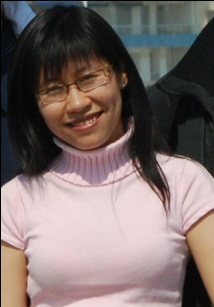 Minh Thuy Le was born in Thanhhoa, Vietnam in 1983. She received her engineer (2006), M.S (2008) degree in Electrical Engineering from Hanoi University of Science and Technology and PhD. (2013) degree in Optique and Radio Frequency from Grenoble Institute of Technology, France. She is lecturer at Department of Instrument and Industrial Informatics and also a researcher at International Research Institute MICA, Hanoi University of Science and Technology (HUST). Her current interests include Embedded System, DSRC technology, Impulse Radar system and antenna research such as: small antennas, meta-material antennas, directive antennas, cylinder-yagi antennas and antenna arrays.
Minh Thuy Le was born in Thanhhoa, Vietnam in 1983. She received her engineer (2006), M.S (2008) degree in Electrical Engineering from Hanoi University of Science and Technology and PhD. (2013) degree in Optique and Radio Frequency from Grenoble Institute of Technology, France. She is lecturer at Department of Instrument and Industrial Informatics and also a researcher at International Research Institute MICA, Hanoi University of Science and Technology (HUST). Her current interests include Embedded System, DSRC technology, Impulse Radar system and antenna research such as: small antennas, meta-material antennas, directive antennas, cylinder-yagi antennas and antenna arrays.
Multimodal indoor localization using heterogenous technologies
Trung-Kien.Dao
Department PSI - MICA
Abstract
Many user localization technologies and methods have been proposed for either indoor or outdoor environments. Among the most used technologies are GPS, RFID, others methods based on WiFi, camera, accelerometer, microphones, etc. However, each technology has its own backwards, for example GPS is not good with indoor localization when number of visible satellites is reduced cause of walls blocking; WiFi positioning is only suitable for user localization with low precision because of its accuracy varying from few meters to tens of meters; RFID, a proximity scheme, is limited in a small range since RFID readers could not be installed at every location.
Recently, many researches and designs have been proposed to build a combination of multiple localization technologies system which can provide higher precision results and solve the limitation in each localization technology alone. Pfeifer proposed a design to extract results from localization technologies as useful information in real time, however it lacks ideas and algorithms about how those results should be fused and analysed to produce better results. Few systems already combined some localization technologies, which showed to improve in precision, but these systems depend on specific technologies and lack of availability characteristics: GPS, WiFi, Zigbee; RFID, WiFi, camera; WiFi, step count.
In this paper, a general approach to multimodal localization system combining multiple technologies based on the idea of dividing spaces into grid points where location result will be chosen as the point with highest probability depends on a given precision is proposed. The system does not depend on any specific localization technologies but is built to be an open platform so that multiple heterogeneous localization technologies can be integrated, since more technologies applied means we have more information to improve precision as well as availableness.
Biodata
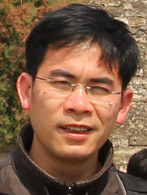 Trung-Kien Dao is a lecturer in the Pervasive Spaces and Interaction (PSI) Department at MICA International Research Institute (HUST - CNRS/UMI2954 - Grenoble INP) of Hanoi University of Science and Technology. He received his BSc degree in Information Technology from Cergy-Pontoise University, France, in 2004, and MSc degree in Distributed Systems from Pierre and Marie Curie University (UPMC), France, in 2006. He received his PhD degree in Mechanical and Automation Engineering from Da-Yeh University, Taiwan, in 2010. In 2010, he joined the Group of Advanced Instrumentation which is now the PSI Department. His current research interests lie in the area of ubiquitous computing, particularly multimodal localization, location-based services, context awareness and user adaptation in pervasive environments.
Trung-Kien Dao is a lecturer in the Pervasive Spaces and Interaction (PSI) Department at MICA International Research Institute (HUST - CNRS/UMI2954 - Grenoble INP) of Hanoi University of Science and Technology. He received his BSc degree in Information Technology from Cergy-Pontoise University, France, in 2004, and MSc degree in Distributed Systems from Pierre and Marie Curie University (UPMC), France, in 2006. He received his PhD degree in Mechanical and Automation Engineering from Da-Yeh University, Taiwan, in 2010. In 2010, he joined the Group of Advanced Instrumentation which is now the PSI Department. His current research interests lie in the area of ubiquitous computing, particularly multimodal localization, location-based services, context awareness and user adaptation in pervasive environments.

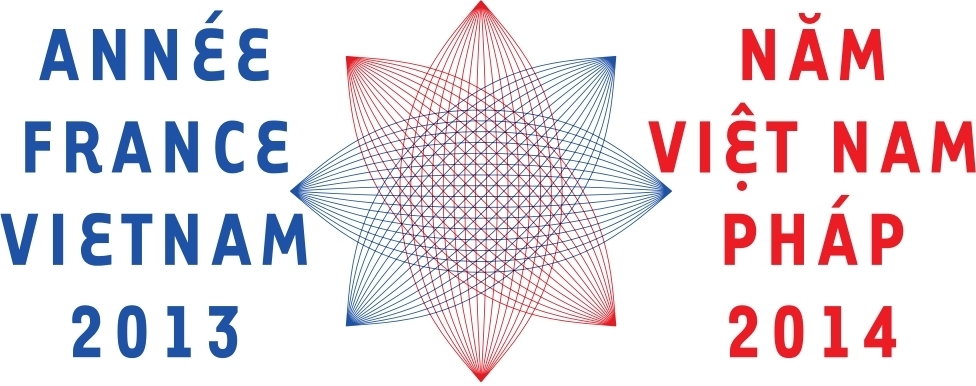
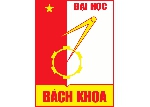 Hanoi University of
& Technology, Vietnam
Hanoi University of
& Technology, Vietnam
 International Research
Institute MICA, Vietnam
International Research
Institute MICA, Vietnam
 LIG Laboratory, France
LIG Laboratory, France
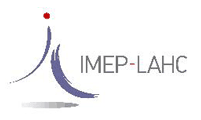 IMEP-LAHC Laboratory, France
IMEP-LAHC Laboratory, France
 INRIA
INRIA
 CNRS
CNRS
 Grenoble INP, France
Grenoble INP, France
 KEYNOTE SPEECH
#1
KEYNOTE SPEECH
#1 Fawzi Nashashibi, 46 years, is a senior researcher and the Program Manager of
IMARA Team at INRIA (Paris-Rocquencourt) since November 2010. He has been senior
researcher and Program Manager in the robotics centre of the Ecole des Mines de
Paris (Mines ParisTech) since 1994 and was an R&D engineer and a project manager
at ARMINES since May 2000. He was previously a research engineer at PROMIP
(working on mobile robotics perception dedicated to space exploration) and a
technical manager at Light Co. where he led the developments of Virtal
Reality/Augmented Reality applications. Fawzi Nashashibi has a Masters Degree in
Automation, Industrial Engineering and Signal Processing (LAAS/CNRS), a PhD in
Robotics from Toulouse University prepared in (LAAS/CNRS) laboratory, and a HDR
Diploma (Accreditation to research supervision) from University of Jussieu
(Paris 6). His main research topics are in environment perception and
multi-sensor fusion, vehicle positioning and environment 3D modeling with main
applications in Intelligent Transport Systems and Robotics. He played key roles
in more than 50 European and national French projects such as Carsense, ARCOS,
ABV, LOVe, HAVE-it, SPEEDCAM, PICAV, CityMobil... some of which he is
coordinating. He is also involved in many collaborations with French and
international academics and industrial partners. He is author of numerous
publications and patents in the field of ITS and ADAS systems. His current
interest focuses on advanced urban mobility through the design and development
of highly Automated Transportation Systems. This includes Highly Automated
Unmanned Guided Vehicles (such as Cybercars) as well automated personal
vehicles. Since 1994 he is also a lecturer in several universities (Mines
ParisTech, Paris 8 Saint-Denis, Leonard de Vinci Univ. - ESILV professor,
Telecom Sud Paris, INT Evry, Ecole Centrale d’Electronique, in the fields of
image and signal processing, 3D perception, 3D info-graphics, mobile robotics
and C++/JAVA programming. IEEE member, he is also member of the ITS Society and
the Robotics & Automation Society. He is an Associate Editor of several IEEE
international conferences such as ICRA, IROS, IV.
Fawzi Nashashibi, 46 years, is a senior researcher and the Program Manager of
IMARA Team at INRIA (Paris-Rocquencourt) since November 2010. He has been senior
researcher and Program Manager in the robotics centre of the Ecole des Mines de
Paris (Mines ParisTech) since 1994 and was an R&D engineer and a project manager
at ARMINES since May 2000. He was previously a research engineer at PROMIP
(working on mobile robotics perception dedicated to space exploration) and a
technical manager at Light Co. where he led the developments of Virtal
Reality/Augmented Reality applications. Fawzi Nashashibi has a Masters Degree in
Automation, Industrial Engineering and Signal Processing (LAAS/CNRS), a PhD in
Robotics from Toulouse University prepared in (LAAS/CNRS) laboratory, and a HDR
Diploma (Accreditation to research supervision) from University of Jussieu
(Paris 6). His main research topics are in environment perception and
multi-sensor fusion, vehicle positioning and environment 3D modeling with main
applications in Intelligent Transport Systems and Robotics. He played key roles
in more than 50 European and national French projects such as Carsense, ARCOS,
ABV, LOVe, HAVE-it, SPEEDCAM, PICAV, CityMobil... some of which he is
coordinating. He is also involved in many collaborations with French and
international academics and industrial partners. He is author of numerous
publications and patents in the field of ITS and ADAS systems. His current
interest focuses on advanced urban mobility through the design and development
of highly Automated Transportation Systems. This includes Highly Automated
Unmanned Guided Vehicles (such as Cybercars) as well automated personal
vehicles. Since 1994 he is also a lecturer in several universities (Mines
ParisTech, Paris 8 Saint-Denis, Leonard de Vinci Univ. - ESILV professor,
Telecom Sud Paris, INT Evry, Ecole Centrale d’Electronique, in the fields of
image and signal processing, 3D perception, 3D info-graphics, mobile robotics
and C++/JAVA programming. IEEE member, he is also member of the ITS Society and
the Robotics & Automation Society. He is an Associate Editor of several IEEE
international conferences such as ICRA, IROS, IV. KEYNOTE SPEECH
#3
KEYNOTE SPEECH
#3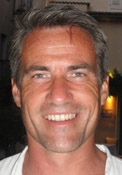 KEYNOTE SPEECH
#4
KEYNOTE SPEECH
#4 Van
Duc Nguyen was born in Vietnam, in 1973. He received the Bachelor and Master of
Engineering degrees in Electronics and Communications from the Hanoi University
of Technology, Vietnam, in 1995 and 1997, respectively, and the Dr.-Eng. degree
in Communications Engineering from the University of Hannover, Germany, in 2003.
From 1995 to 1998, he worked for the Technical University of Hanoi as an
Assistant Researcher. In 1996, he participated in the student exchange program
between the Technical University of Hanoi and theMunich University of Applied
Sciences for one term. From 1998 to 2003, he was with the Institute of
Communications Engineering, University of Hannover, first as a DAAD scholarship
holder and then as a member of the scientific staff. From 2003 to 2004, he was
employed with Agder University College in Grimstad, Norway, as a Postdoctoral
Researcher. He was with International University of Bremen as a Postdoctoral
Fellow. In 2007, he spent 2 months at the Sungkyungkwan University, Korea, as a
Research Professor. In 2008 and 2009, he was visisting researcher at the
Klagenfurt University, Austria, and the Agder University, Norway, respectively.
His current research interests include Mobile Radio Communications, especially
MIMO-OFDM systems, and radio resource management, channel coding for cellular
and adhoc networks.
Van
Duc Nguyen was born in Vietnam, in 1973. He received the Bachelor and Master of
Engineering degrees in Electronics and Communications from the Hanoi University
of Technology, Vietnam, in 1995 and 1997, respectively, and the Dr.-Eng. degree
in Communications Engineering from the University of Hannover, Germany, in 2003.
From 1995 to 1998, he worked for the Technical University of Hanoi as an
Assistant Researcher. In 1996, he participated in the student exchange program
between the Technical University of Hanoi and theMunich University of Applied
Sciences for one term. From 1998 to 2003, he was with the Institute of
Communications Engineering, University of Hannover, first as a DAAD scholarship
holder and then as a member of the scientific staff. From 2003 to 2004, he was
employed with Agder University College in Grimstad, Norway, as a Postdoctoral
Researcher. He was with International University of Bremen as a Postdoctoral
Fellow. In 2007, he spent 2 months at the Sungkyungkwan University, Korea, as a
Research Professor. In 2008 and 2009, he was visisting researcher at the
Klagenfurt University, Austria, and the Agder University, Norway, respectively.
His current research interests include Mobile Radio Communications, especially
MIMO-OFDM systems, and radio resource management, channel coding for cellular
and adhoc networks. Khanh
Nguyen Quang was born in Hai Phong, Viet Nam, on September 12th, 1986. He
received the B.S. degree in Networking and Telecommunication from Hanoi
University of Science and Technology, Vietnam and theM.S. degree in Networking
and Telecommunication from l’Universite d’Avignon et des Pays de Vaucluse,
France in 2009 and 2010 respectively.From January 2010 to July 2010, he has
worked at LIA in d’Avignon et des Pays de Vaucluse, France. He has been PhD
student from Hanoi University of Science and Technology since 2011. His major
interests are mobile agents, network management, multimedia applications, mobile
networks, speed communications, mobility, security and QoS guarantees and
networking.
Khanh
Nguyen Quang was born in Hai Phong, Viet Nam, on September 12th, 1986. He
received the B.S. degree in Networking and Telecommunication from Hanoi
University of Science and Technology, Vietnam and theM.S. degree in Networking
and Telecommunication from l’Universite d’Avignon et des Pays de Vaucluse,
France in 2009 and 2010 respectively.From January 2010 to July 2010, he has
worked at LIA in d’Avignon et des Pays de Vaucluse, France. He has been PhD
student from Hanoi University of Science and Technology since 2011. His major
interests are mobile agents, network management, multimedia applications, mobile
networks, speed communications, mobility, security and QoS guarantees and
networking. Le Minh Hoang was born in Hanoi, Vietnam. He received the Electrical Engineer degree, specialty of Instrumentation and Industrial Information from the Hanoi University of Science and Technology, Hanoi, Vietnam, in 2007, and the Master and Ph.D. degrees in Automatic and Production from University of Grenoble, Grenoble, France, in 2008 and 2011, respectively. Since 2007, he has been with International Research Institute MICA (Multimedia, Information, Communication and Applications), Hanoi University of Science and Technology, working in the areas of instrumentation, and automated control system. He is currently a Researcher at the Department of Pervasive Spaces & Interaction. His research interests include optimization, energy management system in building and wireless sensors network in building.
Le Minh Hoang was born in Hanoi, Vietnam. He received the Electrical Engineer degree, specialty of Instrumentation and Industrial Information from the Hanoi University of Science and Technology, Hanoi, Vietnam, in 2007, and the Master and Ph.D. degrees in Automatic and Production from University of Grenoble, Grenoble, France, in 2008 and 2011, respectively. Since 2007, he has been with International Research Institute MICA (Multimedia, Information, Communication and Applications), Hanoi University of Science and Technology, working in the areas of instrumentation, and automated control system. He is currently a Researcher at the Department of Pervasive Spaces & Interaction. His research interests include optimization, energy management system in building and wireless sensors network in building. Minh Thuy Le was born in Thanhhoa, Vietnam in 1983. She received her engineer (2006), M.S (2008) degree in Electrical Engineering from Hanoi University of Science and Technology and PhD. (2013) degree in Optique and Radio Frequency from Grenoble Institute of Technology, France. She is lecturer at Department of Instrument and Industrial Informatics and also a researcher at International Research Institute MICA, Hanoi University of Science and Technology (HUST). Her current interests include Embedded System, DSRC technology, Impulse Radar system and antenna research such as: small antennas, meta-material antennas, directive antennas, cylinder-yagi antennas and antenna arrays.
Minh Thuy Le was born in Thanhhoa, Vietnam in 1983. She received her engineer (2006), M.S (2008) degree in Electrical Engineering from Hanoi University of Science and Technology and PhD. (2013) degree in Optique and Radio Frequency from Grenoble Institute of Technology, France. She is lecturer at Department of Instrument and Industrial Informatics and also a researcher at International Research Institute MICA, Hanoi University of Science and Technology (HUST). Her current interests include Embedded System, DSRC technology, Impulse Radar system and antenna research such as: small antennas, meta-material antennas, directive antennas, cylinder-yagi antennas and antenna arrays. Trung-Kien Dao is a lecturer in the Pervasive Spaces and Interaction (PSI) Department at MICA International Research Institute (HUST - CNRS/UMI2954 - Grenoble INP) of Hanoi University of Science and Technology. He received his BSc degree in Information Technology from Cergy-Pontoise University, France, in 2004, and MSc degree in Distributed Systems from Pierre and Marie Curie University (UPMC), France, in 2006. He received his PhD degree in Mechanical and Automation Engineering from Da-Yeh University, Taiwan, in 2010. In 2010, he joined the Group of Advanced Instrumentation which is now the PSI Department. His current research interests lie in the area of ubiquitous computing, particularly multimodal localization, location-based services, context awareness and user adaptation in pervasive environments.
Trung-Kien Dao is a lecturer in the Pervasive Spaces and Interaction (PSI) Department at MICA International Research Institute (HUST - CNRS/UMI2954 - Grenoble INP) of Hanoi University of Science and Technology. He received his BSc degree in Information Technology from Cergy-Pontoise University, France, in 2004, and MSc degree in Distributed Systems from Pierre and Marie Curie University (UPMC), France, in 2006. He received his PhD degree in Mechanical and Automation Engineering from Da-Yeh University, Taiwan, in 2010. In 2010, he joined the Group of Advanced Instrumentation which is now the PSI Department. His current research interests lie in the area of ubiquitous computing, particularly multimodal localization, location-based services, context awareness and user adaptation in pervasive environments.